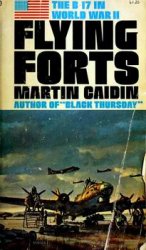Late Prehistoric City-States
Mesopotamia has long been recognized as one of the primary complex societies, developing a state structure without external influence. The Uruk period (c. 4000-3000 BC) sees social complexity: urbanism, elaborate temple complexes, mass production, the earliest writing, and the earliest representations - although standardized and anonymous - of kings (Table 1). The site of Uruk with its 320 x 150 m temple complex and separate temple tower provides the most emphatic evidence for public institutions in this period. Temples are identifiable by their ‘tripartite’ plan, a large central space flanked by rows of smaller rooms, and an external fac:ade decorated with narrow niches and buttresses. The Uruk temple complex sits near the center of a city that had reached 250 ha by c. 3200 BC. This rapid urban growth was matched by depopulation of the immediate countryside, but settlement patterns around other contemporary sites (i. e., Nippur) indicate that the normal arrangement was a scatter of linked towns and villages surrounding each city.
The Uruk Period ceramic assemblage is extraordinarily standardized, almost entirely undecorated (in contrast to the preceding Ubaid Period) and mass produced. The mud bricks from which both temples and houses were constructed are similarly standardized in shape and size. It was in the Uruk Period that one of the most distinctive objects of Mesopotamia, the cylinder seal, first appeared. These objects acted much like a signature, expressing authority and ownership when rolled across a clay tablet or door sealing. Usually made of imported stone, seals were intended to be worn and seen, as badges of office or of wealth and as good luck amulets. Scenes on Uruk Period seals include representations of kings involved in religious or (more rarely) military events, as well as animal combats or more prosaic rows of human figures weaving or manufacturing pottery. The glyptic scenes of kings in front of temples or feeding temple flocks are supplemented by votive statuary and reliefs showing the king as a solitary pious figure or involved in symbolic lion combat. He is instantly recognizable, no matter which context, by his distinctive skirt and hat, plus the fact that he is the center of attention or focus of each scene. These characteristics of royal art will have a long tradition, lasting through the first millennium BC.
Writing is invented to serve the economy, particularly temple-centered economic administration. The earliest texts are overwhelmingly simple receipts and
Inventories, supplemented by long strange vocabulary lists, ultimately quite revealing of the classes into which the Mesopotamian mind categorized the natural and human world. The script is initially pictographic but rapidly becomes syllabic as the signs develop from inscribed drawings to impressed cuneiform.
Trade colonies and pervasive southern Uruk cultural material in northern Syria, southeast Turkey, and western Iran provide further evidence for the economic power of urban institutions. Much of the archaeological debate about the Uruk Period in the last two decades has focused on the southern expansion into northern and northwestern areas and on the particular relationship between local and southern populations. The consensus is that the southern influence was just that, strong cultural influence backed up by genuine presence of southerners at some sites. But there was in fact substantial social and economic complexity in the north prior to the southern influence, and there was no attempt by the south to impose either economic or political control.
Third Millennium BC City-States to Nation-States
The Early Dynastic (ED) Period (c. 3000-2334 BC) follows the Uruk in southern Mesopotamia and can be summarized as an era of city-states (Table 1). The
Uruk Period developments of urbanism, economic complexity, and king-led, staple resource-based wealth with strong religious flavor matured and were formalized. The city-states were potentially selfsufficient, yet they share a material culture assemblage (pottery, domestic and religious architectural styles, ways of burial, etc.), and have a common religious system and literary tradition. Each city-state had a patron deity as well as hereditary kings, and complementary institutions in the temple and the palace. This cultural network covers all of the southern alluvial plains and even incorporates Mari, on the Syrian Euphrates (see map, Figure 1). The city-states are perhaps best typified by Lagash, an urban center with a network of linked towns and villages and associated agricultural land and irrigation canals. Lagash was just one of approximately 15 major contemporary independent city-states, in a delicate balance which involved complementary economic behavior and occasional armed conflict. We know the list of some of Lagash’s kings and have their images on stone reliefs, variously at war with neighbors such as Umma, building temples and presenting offerings to the gods.
Kish has the best-preserved palace (Palace A), with formal and symmetrical public and private wings, surrounded by thick, buttressed walls (see Figure 2). Unfortunately, palaces tended to be kept clean during use and to be emptied at the end of their lives,
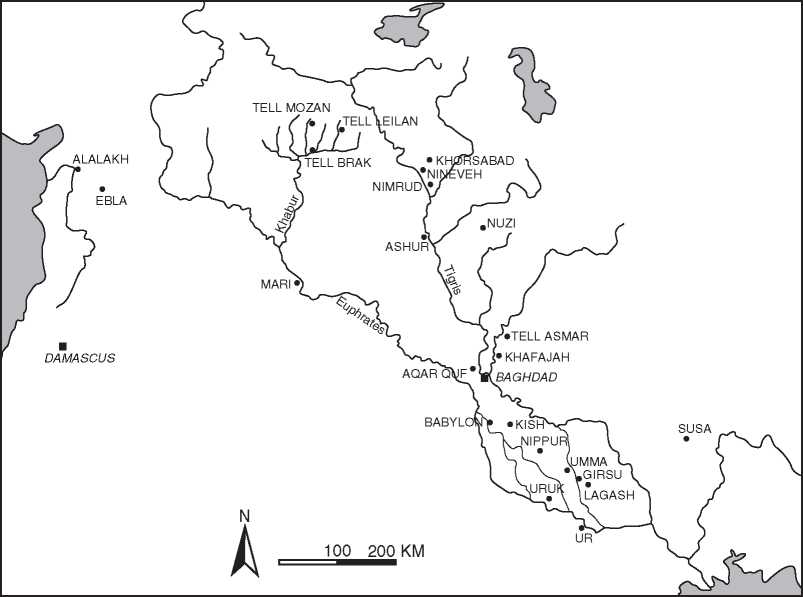
Figure 1 Map of Mesopotamia with sites mentioned in the text.
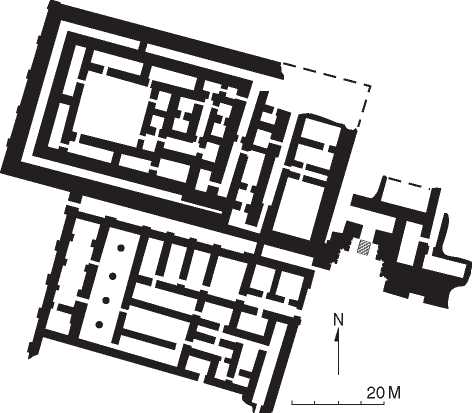
Figure 2 Early Dynastic Palace A at Kish. After Moorey (1978).
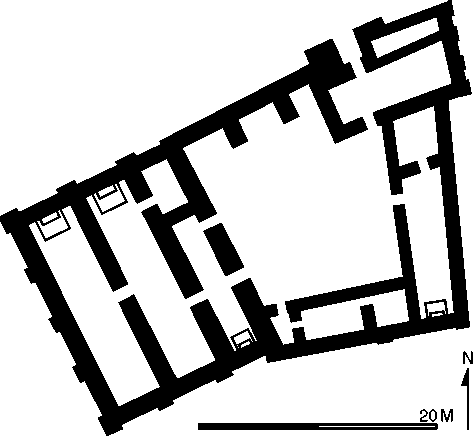
Figure 3 Late Early Dynastic Temple at Khafajah, Level X. After Delougaz and Lloyd (1942).
Leaving only an architectural plan and an impression of sterile, impersonal power. The religious institutions of the ED are most clearly illustrated at several sites along the Diyala River, northeast of modern Baghdad. Tell Asmar and Khafajah present us with a range of small to medium-sized shrines and temples (see Figure 3), while the Temple Oval at Khafajah offers a vision of how large and impressive these institutions could be. In each temple, the central shrine room is easily identified by a combination of plan (right-angled access), features (built-in altars), and contents (stone votive statues of men and women with hands clasped, elaborate bronze or ceramic offering stands). The Mesopotamian pantheon mirrors human relations; gods have families, anD family members are frequently worshipped in the same temple in lesser shrine rooms. The temples also have large courtyards and storage spaces, for outdoor rituals and economic activities. Archives of texts, such as that from the Ba’u temple at Girsu, reveal that temples were major landowners and employers as well as houses of the gods.
The Ur Cemetery, established in the Late ED period, is justifiably famous for its rich assemblage of exquisitely worked vessels, seals, jewelry, weapons, and musical instruments, the raw materials for which were imported from as far away as the Indus Valley (carnelian), Afghanistan (lapis lazuli), Iran (chlorite), Anatolia (silver), and Egypt (gold). The cemetery is unfortunately also famous for a brief and limited episode of human sacrifices (e. g., Royal Tomb 1237, with its 74 skeletons), an unusual aspect of burial unique to a few years at the city of Ur and not at all representative of Mesopotamian burial practices. But the human sacrifices can be seen as an extreme version of a commonplace feature of Mesopotamian burial, grave goods. There was a clear societal image of the afterlife, and the necessity of taking food, drink, and ornaments to wear, or with which to bribe underworld deities, was strong at all levels of society. Besides cemetery burial, a popular option was interment below house floors, which appears from the ED through the first millennium BC. Placement below house floors retained the deceased as a member of the family, while cemetery burial may have been more common for those whose identity reached beyond the household and lineage, such as priests, kings, and officials.
Pottery continues to be mass produced and standardized, with some variation and decoration among jars but very little among bowls. The large numbers of plain-rimmed single-Serving bowls at all sites may reveal Mesopotamian dining habits as individual-centered, but more work remains to be done on this issue. Cylinder seals diverge from the scenes of the Uruk Period and have patterns of animals and humans in hand-to-hand combat, with smaller numbers of scenes showing symbolic banquets or geometric designs.
Contemporary with the southern ED, Ninevite 5 is the chronological label for Northern Mesopotamia. Contemporary textual documentation and modern archaeological excavation in the north have both lagged behind that of the south, with the result that the north is seen as something of a backwater, but recent and ongoing excavations in Syria are filling the gaps and revealing a densely occupied world of great economic variety. Ninevite 5 pottery includes both painted and incised wares, which it is tempting to
View as implying a less-institutionalized economy and society. The settlement pattern is less hierarchical than in the south, and although cities and religious institutions exist, the north may be characterized by mature chiefdoms rather than city-states.
It was during the Akkadian Period (c. 2334-2154 BC) that the region’s first nation-state was created in southern Mesopotamia (Table 1). It was headed by a dynasty of charismatic kings, some of the earliest visible ‘agents’ responsible for political change and linked cultural changes. The first step was military conquest, followed by social, economic, and administrative transformations designed to create a nation out of a disparate group of city-states. These included the replacement of Sumerian by Akkadian as the ‘official’ written language, establishment of a new capital city, imposition of regional governors loyal to the king, placement of royal images in key locations and a new system of weights, measures, and legal oaths. The Akkadian kings and the ideal of unity they represented had great resonance through the rest of Mesopotamian history: copies of Akkadian royal inscriptions and the myth of the birth and rise to power of the dynasty’s first king, Sargon, appear long after the nation had vanished.
Archaeologically, we are obstructed by the problem that the capital city, Agade, has never been discovered, although it is known to lie in the northern alluvial plains, near Babylon, Kish, and modern Baghdad. However, many major artworks of this period survived and reveal a new freedom of movement and delicacy of detail, while maintaining many of the ED/Sumerian traditions of royal representation. The Akkadian stele of Naram-Sin can be contrasted to the ED stele of Vultures; both represent a king leading his army in battle. The Vulture stele shows Eannatum of Lagash ahead of a blocky cluster of his army in strict horizontal registers with no representation of background setting; the Naram-Sin stele shows a backdrop of mountains and trees, and the horizontal registers have been replaced by undulating sloped ground-lines with individual figures. Akkadian Period cylinder seals retain the animal-human combat as an important motif, refining the crowded ED patterns into elegant heraldic pairs. The combat motif is supplemented by that of ‘introduction’, a procession of deities leading the human seal-owner towards a seated deity. Where domestic occupational material of the Akkadian Period has been uncovered (Nippur, Uruk), the ED cultural traditions of architecture and format of burial persist. Ceramic types change, but gradually.
The great debate about this period is whether the Akkadian system was a state, nation, or empire. The wider question of archaeologically visible determinatives of nations and empires is also part of this discussion. In some ways, the system is best represented by evidence from its edge in northeast Syria: the armory/arsenal (Naram-Sin’s palace) and massive administrative complexes at Tell Brak or the Akkadian buildings at Tell Leilan. These Akkadian structures intrude into a world characterized by city-states and small kingdoms ruled by local Hurrian kings. The northern pottery style and assemblage contrasts strongly with that of the south, but the official southern Akkadian seal style is widespread. Artworks of the Akkadian kings glorify their military conquests rather than showing religious building projects. The most striking of these is again the stele of Naram-Sin, grandson of the dynasty founder. Naram-Sin is, unusually, depicted with the pair of bull’s horns that identify a deity. All these aspects look imperial. Yet the ‘empire’ was patchy and acted more like a commercial enterprise aimed at access to raw materials rather than accumulation of land and subjects.
Discussion of Sumer and Akkad would be incomplete without reference to the ethnic distinctions implied. Sumerian and Akkadian languages are distinct, Sumerian being an ergative isolate while Akkadian is the oldest known Semitic language. But identification of Sumerian versus Akkadian peoples, sites, or material culture is virtually impossible. By the time we can identify two potential populations from their written languages, in the later third millennium BC, centuries of contact have created an ‘ethnically entangled’ bilingual population. Geographically, Sumer is traditionally located in the southern half of Babylonia, from Nippur to the Arabian Gulf, while Akkad is northern Babylonia. An alternative view holds that Sumer is the region dependent on the Euphrates and Akkad the world of the Tigris. But neither of these two mental divisions map onto distinct cultural regions. In fact, Sumer and Akkad are customarily used together in royal inscriptions from the Ur III Period onward; rarely do inscriptions speak of just Sumer or just Akkad. During most of the Akkadian Period, the kings simply refer to themselves as kings of Agade or ‘king of the four quarters.’
The ED situation of interlinked but self-sufficient city-states is the ‘default state’ for southern Mesopotamia. The Akkadian Period then presents the often reached-for ideal of a unified nation (to recur in Ur III, Old Babylonian, etc.), but this nation just as frequently collapses. The Akkadian nation broke down rapidly and ignominiously, according to textual records. The later kings lost power and land; the capital Agade dwindled to a village. However, excavations in late Akkadian levels at Nippur, Uruk, and other sites indicate continuity of settlement and material culture despite Agade’s problems. By contrast, the end of the Akkadian adventure in northern Mesopotamia was marked by withdrawal of personnel and the ritual in-filling of public buildings (i. e., Area SS at Tell Brak). There is an ongoing debate over the post-Akkadian Period in northern Mesopotamia and the reason for the retraction of the Akkadian presence, plus the nature of the reaction of the indigenous population. A climatic downturn, aridity, agricultural collapse, and the emigration of large parts of the northern population have been suggested; but while some sites are abandoned, others show continued occupation. We are hampered in reconstructing this period by few relevant excavations and an imprecise characterization of the ceramic assemblage.
The Ur III dynasty (2112-2004 BC) attempted to recreate the nation of the Akkadian kings, but by literally inverting it: Sumerian returned as the official written language, monumental art returned to the archaic forms of the ED, and the nation was ruled from the far south of the alluvial plain, from Ur, rather than the north. These are substantial differences from the Akkadian situation, yet the concept of the southern plains as a unified whole with the surrounding areas tied to it to varying degrees is a replica of the Akkadian ideal. Economic documents proliferate; it appears that few transactions were too trivial to record, and unprecedented numbers of people were employed at least part time by the palace, necessitating documentation of rations and movement of raw materials and worked goods. In northern Mesopotamia, the Tell Brak arsenal was rebuilt, but other sites (for instance Tell Mozan) remained independent.
The greatest archaeological contribution of the Ur III kings was the elaboration of the existing temple platform into the stepped ziggurat, possibly the most enduring symbol of Mesopotamian-ness (see Figure 4). Like megalithic structures in Neolithic Europe, ziggurats, with their strongly unnatural shape, massive size and weight, would have been striking markers of human impact on the landscape.
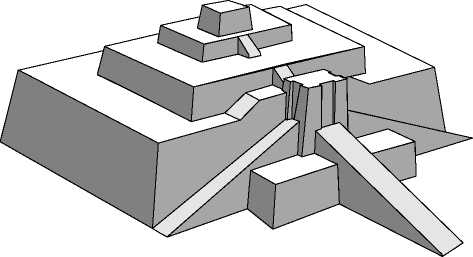
Figure 4 Ur III Ziggurat at Ur (reconstruction). After Woolley (1939).
Particularly in the flat unbroken southern Mesopotamian plain, these structures are visible from substantial distances and would have emerged as peaks above a mass of urban buildings. They are icons simultaneously of the kings who commissioned them and the gods to whom they were dedicated; they express the glory of the city and that of the larger city-state to which they belonged. They are also monuments to collective labor of the city-state’s citizens, but unfortunately access seems to have been restricted, once completed, to religious functionaries and perhaps political elites.
Ur III monumental artworks emphasize the religious side of being a king, rather than the military aspects, and reliefs such as the Ur-Nammu stele are a throw-back to the ED style of presenting images serially, in horizontal registers. Overall, Ur III art is far more conventional than that of the Akkadian Period. In cylinder seals, the elegant animal combats vanish and introduction scenes are reduced in complexity and detail. Indeed, many introduction seals are so similar as to be indistinguishable except through their inscriptions. But one original element in this period is the return of baked clay figurines. These had been a regular feature of prehistory but essentially vanish with the advent of the state in the Uruk Period. This disappearance may have been due to a shift in access to means of production, particularly if ceramic and figurine production were closely linked and ceramic production became increasingly industrialized. These figurines now return in force, overwhelmingly female and naked; they are handmade with applied details and a schematic, yet attractive, form. Incantation texts indicate that their probable function was love or fertility charms.
Second Millennium BC Collapse, Expansion and Collapse
An episode of political collapse (2004-1763 BC) followed the decline of the Ur III state and the capture of its last king by an Elamite army. These centuries are known in southern Mesopotamia as the Isin-Larsa Period because the leaders of the two city-states of Isin and Larsa were the primary actors in a political struggle for control of the southern plains. Additional minor actors were the kings of Uruk, Marad, and Babylon, most of Amorite descent. These Amorites are the earliest of a series of ‘foreign’ nomadic groups who filtered into and assimilated with local Mesopotamian peoples and society. Their ease at cultural assimilation has traditionally been ascribed to their lack of written language and artistic expression. However, the strength oF Mesopotamian culture and its surprisingly comprehensive and embracing nature were also certainly factors. The political success of the Amorites is less easily explained and is genuinely ‘revolutionary’.
Archaeologically, the Isin-Larsa Period is difficult to distinguish from the preceding Ur III and subsequent Old Babylonian. Some specific ceramic markers of these centuries exist (white-inlaid gray ware), but the overall assemblages vary very little; cylinder seals continue the introduction theme. Perhaps the downscaling from nations to city-states did reduce the number of monumental artworks, for we have no representations of kings from this period. But it does provide the best image of Mesopotamian urban domestic architecture in two neighborhoods at Ur. There the ideal of a courtyard surrounded by rooms including bathroom and kitchen has been organically adapted to match available space, with irregular houses, shops, and shrines reached via winding streets. Texts allow the unfolding of the biography of some houses as they passed between owners and were internally modified.
Ultimately, neither Isin nor Larsa but Babylon was victorious in the regional power struggle. The subsequent political situation in the Old Babylonian Period (1763-1595 BC) mirrors the Akkadian and Ur III states, re-focused at the northern end of the alluvial plains (Table 1). This earliest Babylonian dynasty is best known for king Hammurapi, whose Law Code offers a vision of Mesopotamian society with strictly divided classes: slave, poor, free, or female. The top of the basalt stele on which the law code is inscribed presents the enduring and iconic image of the king receiving the ‘rod and ring’ (two enigmatic and much-discussed symbols) from the sun god, who also oversees justice. At the other end of the artistic spectrum, mass production subsumes the naked female figurines, which are now formed in molds in large numbers. These are supplemented by baked clay plaques with images of deities and scenes of ‘family life’ or myth.
As already mentioned, the transition from the third to early second millennium BC in northern Mesopotamia remains one of the largest holes in our archaeological reconstruction. During the first quarter of the second millennium BC in northern Mesopotamia, the city of Ashur was engaged in lucrative long-distance trade in textiles and metals with Kanesh and other cities in Anatolia (central Turkey). This trade is unfortunately mostly documented in texts from Kanesh; relevant levels at Ashur are covered by later occupation and the way stations on the route across the Khabur basin (NE Syria) are largely unexcavated or unidentified. We are only on firmer ground with the establishment of the Kingdom of Upper Mesopotamia in what would become Assyria, northern Iraq, and northeast Syria (1813-1741 BC). This was created by a Sargon-like figure, Shamshi-Adad, and reached from Ashur and Ekallate on the Tigris across to Tell Leilan in the northeast Khabur basin and southwest to Mari on the Euphrates. This was the first unified regional state in the north. Much of the political situation is reconstructed from the massive text archive preserved in the palace at Mari, at the juncture of northern and southern Mesopotamia and the Levant. This building is one of the most impressive structures in Mesopotamia, a vast sprawl of over 250 rooms, organized into clusters by function and surrounding two large courtyards partly decorated with wall paintings depicting royal investiture and symbolic scenes. A distinctive ceramic assemblage, Khabur Ware (often decorated with red or black horizontal stripes), traditionally has been associated with the Kingdom of Upper Mesopotamia. But excavations at Tell Leilan, Tell Brak, and elsewhere indicate that this pottery continues to be manufactured, unsurprisingly, after this dynasty and into the subsequent period of political devolution into city-states and small kingdoms.
The Old Babylonian dynasty suffered the same fate as the Akkadian and Ur III dynasties - gradual loss of territory and power and sudden military defeat, this time by an Anatolian army. However, the backdrop to the territory loss and the military defeat was ultimately environmental catastrophe. Water flow in the eastern course of the Euphrates appears to have diminished, with consequences for the survival of key urban systems and the agricultural surplus on which the region relied. What follows is a ‘dark age’ with few texts and unclear archaeological remains. Once the situation is clear again, the later second and all of the first millennium BC is the time of empires. From 1595-1200 BC, the Kassites controlled southern Mesopotamia, Mitanni and then Assyrian leaders ruled northern Mesopotamia, the Elamites expanded on the Iranian plateau, the Hittites created a nation in Anatolia, and New Kingdom rulers changed the atmosphere in Egypt. The kings in all these regions were involved in luxury goods exchange and diplomatic correspondence with each other, exemplified by the Amarna Letters from Egypt. Gold flowed from Egypt and lapis lazuli from the east by way of Babylonia, iron was the gift of the Hittites and horses that of the Mitanni. At the crux of these ‘Great Powers’ lay the Late Bronze Age city-states of northwest Syria: Ugarit, Qatna, Alalakh, and others. Rather than being crushed by the surrounding land-hungry regimes, these land-poor city-states wielded enormous economic power because of their contacts and near monopoly on Mediterranean maritime trade.
Both the Kassites in the south and Mitanni in the north are known to have been foreign to Mesopotamia from texts, yet the search for markers of nationality or ethnicity in the archaeological record has proved fruitless. The earliest kings of the Kassites are textually and archaeologically obscure, but by c. 1400 BC they had established a new capital, Aqar Quf, near modern Baghdad. This new foundation would have offered the potential for a new style and structure to reflect their origins, yet the palace and ziggurat are indistinguishable from Mesopotamian prototypes. In northern Mesopotamia, the extent of the Mitanni empire is matched by the spread of a distinctive painted pottery style (Nuzi Ware), yet this spread and its limits have more to do with economic connections than with ethnic identification. This pottery offers an example of an important aspect of the later second millennium across the region, the increased ‘internationalization’ and hybridization of artistic production. The western examples of this pottery (from Alalakh, for example) show floral motifs that owe inspiration to the Mediterranean and Egypt, while western examples more often bear geometric designs. Faience and glass were also now produced, for the moment restricted to decorative luxury items.
From c. 1200 BC, the entire region, from Anatolia to Iran, suffered a second political collapse, with settlement pattern disruptions, urban destructions, environmental stress, and the disappearance of texts. This is matched by political collapses and archaeologically visible destructions across the Mediterranean, sometimes unfairly blamed on the Sea Peoples.
First Millennium BC Empires
The Neo-Assyrian kings were relatively successful at weathering the regional Dark Age at the end of the second millennium BC and are the first to re-emerge as a territorial power. Babylonia devolved once again into rivalry among city-states and was first dominated by Assyria and eventually incorporated into its empire. The Neo-Assyrian is the best-known period of Mesopotamian history but perhaps the most misjudged. Traditionally, Assyria has been viewed as a cruel, military-obsessed regime, but this is belied by minor arts such as ivories, foundation deposits, and the stunning gold work of the royal tombs of Nimrud. Ashurbanipal commissioned a library as well as the destruction of the Elamites. Kings appear in symbolic or religious contexts as often as in military action in palace reliefs.
Neo-Assyrian political ideology was firmly focused on the concept and image of the king, and part of the expression of this ideology was the construction of palaces or entire new cities to house the king, his family, and the imperial administration. Ashur, Nimrud, Khorsabad, and Nineveh mirror the increasing size and complexity of the empire. Each has a citadel densely covered with palaces, temples and administrative structures, and each citadel has been incorporated into an artificially large, regular, and mostly empty city with a vast ring of high walls.
The palaces are famous for the miles of stone reliefs that decorated the public rooms. These develop longstanding themes of Mesopotamian art: ritual banquets, religious ceremonies, and military battles (all known from the ED) and lion and bull hunts (from the Uruk Period). The idea of stone reliefs lining the walls may have been appropriated from the Hittites, but the style is distinctively Assyrian, muscular, symmetrical, teeming with elaborate yet formalized detail. The scale is also unprecedented, with figures reaching over 4 m high at Khorsabad. The king is central and vital to most scenes, immediately recognizable by distinctive dress and hat, slightly larger scale, and as the focus of attention in any scene. The reliefs tend to overwhelm the other art produced under the Neo-Assyrians, but this is no less spectacular. Ivory and gold objects and inlay show strikingly beautiful fusions of Assyrian, Syrian, and Egyptian-Phoenician styles. Cylinder seals, already finely detailed under Middle Assyrian rule in the later second millennium BC, developed further. Many of the later Middle Assyrian scenes had echoed the heraldic groups of the Akkadian period but show new exotic animals, such as ostriches or winged horses. In the Neo-Assyrian Period, seals still show combats and introductions to deities, but the attention to detail begun in the Middle Assyrian period reaches a peak, with individual feathers of winged figures and garment textures clearly articulated. Yet despite military might and impressive art, this Assyrian empire also crumbled, destroyed by a Mede and Babylonian coalition after 2 years of siege and battles.
The Neo Babylonian Period saw the final, again short-lived, Mesopotamian empire. The expansion of the city of Babylon mirrored that of Nineveh, with the enlargement of the core mounded area plus the incorporation of a large and mostly empty area around it. Temples were rebuilt, while the palace was restructured and elaborated to an extreme and functionally useless extent. The blue-glazed brick Ishtar gate, a well-known and often-reproduced icon of this age, was one of several ceremonial access points into the city. Its animal/deity symbolism (Ishtar’s lion, Adad’s bull, Marduk’s dragon) echoes the winged bull gatekeepers of Neo-Assyrian palaces but is uniquely Babylonian in format and sensibility. This was the last independent episode for Mesopotamia, which became part of the Persian empire in 539 BC.




 World History
World History



